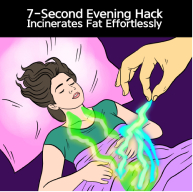High-Intensity Interval Training (HIIT) has taken center stage in the fitness world for its efficiency and effectiveness, especially for women balancing busy lives. HIIT workouts for women provide unique physiological benefits while allowing for flexible workout plans tailored to individual needs. Understanding these benefits, alongside workout adaptations, injury prevention, and nutritional strategies, empowers women aged 35 and above to optimize their fitness routines in a safe and productive way.
Physiological Benefits of HIIT for Women’s Health and Fitness
HIIT offers a host of advantages that go beyond simple calorie burn:
- Time Efficiency: HIIT sessions typically last between 10 to 30 minutes, making them ideal for women juggling work, family, and other commitments. Studies show HIIT can yield similar or superior health benefits compared to longer steady-state workouts 10 Benefits of HIIT.
- Enhanced Fat Burning and Afterburn Effect: Due to the excess post-exercise oxygen consumption (EPOC), the body continues burning calories for hours after HIIT workouts, significantly aiding fat loss efforts.
- Improved Cardiovascular Health: Regular HIIT improves aerobic capacity (VO2 max), lowers blood pressure, and positively affects cholesterol levels, thereby boosting heart health—a crucial factor since heart disease remains a leading cause of death among women PubMed: HIIT Study.
- Muscle Preservation: Unlike steady-state cardio, HIIT helps preserve lean muscle mass during fat loss, which supports a toned body composition.
- Metabolic Boost: HIIT stimulates human growth hormone production and enhances insulin sensitivity, beneficial for metabolism regulation and reducing the risk of type 2 diabetes.
- Accessibility: Many HIIT exercises use bodyweight only, making workouts feasible anywhere without equipment or gym memberships.
- Mental and Hormonal Benefits: The intense, varied nature of HIIT helps reduce stress via endorphin release, improve self-esteem, and regulate hormones like cortisol, contributing to overall mental and physical well-being.
Tailored HIIT Workout Plans for Different Fitness Levels
Adapting HIIT to personal fitness levels is key to safety and ongoing progress:
Beginner HIIT Workout Plan
- Duration: Approx. 15 minutes
- Exercises: Squats, push-up variations, high knees, plank shoulder taps, burpee tuck jumps.
- Work/Rest Interval: 40 seconds work followed by 20 seconds rest, repeated 2-3 times.
- Focus on form and gradual intensity escalation HIIT Workout Plan.
Intermediate & Advanced Adaptations
- Longer work intervals (45-60 seconds) with shorter rest periods (10-20 seconds).
- Exercise Modifications: Add plyometric elements such as squat jumps, clap push-ups, mountain climbers at high speed.
- Emphasis on maintaining proper form to prevent injuries.
Full-Body Exercises Ideal for Women
- Burpees, jump squats, mountain climbers, plank to push-up, kettlebell swings, box jumps, battle ropes, Russian twists, sprint intervals.
- These exercises target multiple muscle groups for balanced conditioning and cardiovascular improvement The Best HIIT Exercises for Women.
Preventing Injuries in HIIT Workouts for Women
HIIT’s intensity can increase injury risk without proper precautions. Common injuries include rotator cuff tears, neck strains, shin splints, tennis elbow, and hamstring strains.
Injury Prevention Strategies:
- Proper Warm-up: Dynamic warm-ups (leg swings, arm circles, light cardio) increase blood flow and prepare joints.
- Technique Focus: Prioritize accurate form over speed to reduce strain, especially on shoulders, knees, and neck.
- Progressive Overload: Gradually intensify workouts rather than sudden high volumes.
- Recovery Time: Allow 48 hours between sessions for muscle repair and CNS recovery.
- Mobility & Strengthening Exercises: Incorporate shoulder stability, neck and upper back strengthening, calf and tibialis anterior exercises.
- Footwear: Use cushioned, supportive shoes to minimize impact-related injuries.
- Modifications: Use resistance bands or reduce overhead movements as needed to protect vulnerable joints.
- Listen to Your Body: Discontinue exercise with pain and seek professional guidance when necessary Common HIIT Injuries and Prevention, Avoiding HIIT Injuries.
HIIT vs Steady-State Cardio: What’s Best for Women?
When choosing between HIIT and steady-state cardio, consider:
- Fitness Level: Steady-state cardio is often better suited for beginners or those returning to exercise due to gentler intensity and better recovery.
- Time Efficiency: HIIT is more time-efficient, offering similar cardiovascular and fat loss benefits in shorter sessions.
- Sustainability and Enjoyment: The best workout is one you can consistently maintain. Some may prefer the predictability of steady-state cardio, others the dynamic challenge of HIIT.
- Synergistic Benefits: Combining both HIIT and steady-state cardio can optimize fat loss, cardiovascular health, and endurance without overtraining Steady State vs HIIT for Weight Loss, HIIT vs Steady State Cardio.
Optimizing HIIT Workouts for Women: Nutrition, Recovery, and Hormonal Considerations
Proper nutrition and recovery elevate the benefits of HIIT:
Nutrition Essentials
- Carbohydrates: Primary fuel source; essential before and during high-intensity sessions.
- Proteins: Support muscle repair and growth; intake timed around workouts enhances recovery.
- Fats: Support hormonal health, particularly estrogen balance.
- Hydration and Electrolytes: Critical for performance and recovery during intense and prolonged workouts.
Training Day Nutrition
- On intense days: emphasize carb loading pre-exercise, fuel during workouts as needed, and post-workout meals with carbs and protein (3:1 ratio) for glycogen replenishment and muscle repair.
- On moderate days: balanced macronutrients with consistent protein intake.
Recovery and Rest Day Nutrition
- Focus on nutrient-dense foods that aid recovery and maintain hormonal balance.
- Include antioxidant-rich fruits and vegetables, high-quality proteins, healthy fats, and complex carbs, while reducing calories as activity decreases.
Hormonal Impact
- HIIT stimulates human growth hormone and testosterone production, aiding muscle building and energy metabolism.
- Regulates cortisol to reduce chronic stress.
- Can improve insulin sensitivity, particularly beneficial for women with PCOS Nutrition for Female Athletes, The Best HIIT Exercises for Women.
Sample Effective HIIT Workout Examples for Women
20-Minute Dumbbell Full-Body HIIT
Targets glutes, core, shoulders, and back with optional dumbbells for resistance.
14-Minute No-Equipment EMOM Workout
Includes squat jumps, push-up rows, and mountain climbers, ideal for home workouts.
These routines are part of structured challenges designed to progress fitness safely and effectively Best HIIT Workouts Of 2025.
Conclusion
HIIT workouts for women provide a powerful, time-efficient avenue to improve cardiovascular health, reduce fat, preserve muscle, and enhance metabolic function. With tailored plans considering fitness levels and body types, coupled with injury prevention techniques and appropriate nutrition, women can safely incorporate HIIT into their routines for sustained physical and mental benefits. The choice between HIIT and steady-state cardio need not be exclusive — a balanced combination aligned to personal goals and preferences offers the best long-term outcomes. Embrace HIIT as a transformative fitness tool that fits seamlessly into the busy and dynamic lives of women over 35.
Frequently Asked Questions (FAQs)
Q1: Can beginners safely do HIIT workouts?
A: Yes, beginners should start with lower intensity, shorter intervals, and focus on mastered exercise forms. Gradual progression is crucial for safety and effectiveness.
Q2: How often should women do HIIT workouts?
A: Typically, 2-3 HIIT sessions per week with adequate rest days in between help maximize benefits and reduce injury risk.
Q3: Do HIIT workouts require equipment?
A: Many effective HIIT workouts use bodyweight exercises only, making them accessible anywhere. Equipment like dumbbells or resistance bands can add variety.
Q4: How does HIIT compare to steady-state cardio for weight loss?
A: Both are effective when done consistently; HIIT offers time efficiency and afterburn benefits, while steady-state cardio may be more suitable for beginners or those preferring lower intensity.
Q5: What nutrition tips support optimal HIIT results?
A: Prioritize carbohydrates for energy, protein for muscle repair, healthy fats for hormonal balance, and stay hydrated. Tailor intake to training intensity and recovery needs.







